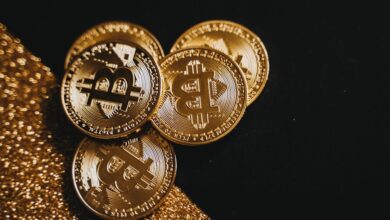Gold and Central Banking: Understanding the Role of Gold Reserves in Economic Stability and Investment Strategies

In an ever-evolving global economy, central banks continue to turn to gold as a cornerstone of their financial strategies. Gold reserves serve not just as a safe haven asset, but also as a vital tool for managing economic stability and navigating inflation. With gold prices fluctuating and gold market trends shifting due to geopolitical tensions and economic uncertainty, understanding how central banks utilize gold is crucial for investors and policymakers alike. This article explores the multifaceted role of gold in central banking, focusing on its significance as a reserve asset, the impact of central bank actions on the gold market, and the importance of sustainable gold mining and recycling practices to ensure a consistent supply. By delving into these topics, we will uncover how central banks influence gold investments, the dynamics of gold futures and ETFs, and the strategies employed to safeguard gold’s value in an increasingly complex financial landscape. Join us as we navigate the intricate relationship between gold and central banking, shedding light on its enduring appeal and relevance in today’s economy.
- 1. The Role of Gold Reserves in Central Banking: A Safe Haven Asset for Economic Stability
- 2. Analyzing Gold Market Trends: How Central Banks Influence Gold Prices and Investment Strategies
- 3. Sustainable Gold Mining and Recycling: Ensuring Future Gold Supply for Central Banks and Investors
1. The Role of Gold Reserves in Central Banking: A Safe Haven Asset for Economic Stability
Gold has long been recognized as a critical component of central bank reserves, serving as a safe haven asset that contributes to economic stability. In times of financial uncertainty, central banks turn to gold reserves to safeguard their economies and maintain confidence in their currency. The intrinsic value of gold, coupled with its historical significance, makes it a reliable asset that central banks can utilize to manage reserves effectively.
Central banks hold gold primarily to diversify their portfolios and mitigate risks associated with currency fluctuations and inflation. As a tangible asset, physical gold provides a hedge against economic instability and currency devaluation. In recent years, as global market trends have shifted and inflationary pressures have increased, the demand for gold has surged. This rise in gold prices reflects investors' growing confidence in gold as a store of value and a safeguard against economic turmoil.
The gold market is influenced by various factors, including gold production levels, mining activities, and global demand for gold. Central banks actively monitor these elements to make informed decisions regarding their gold reserves. For instance, sustainable gold mining practices have garnered attention as investors seek ethical and environmentally conscious investments. Additionally, gold recycling plays a significant role in maintaining supply while minimizing the environmental impact of mining.
Gold investment is not limited to physical gold; it also encompasses gold ETFs and gold futures, which allow investors to gain exposure to gold prices without the necessity of holding the physical asset. However, central banks primarily focus on accumulating gold bullion, gold bars, and gold coins as part of their reserve strategy. These assets not only enhance liquidity but also bolster the credibility of central banks in the eyes of international markets.
Moreover, the interplay between gold and cryptocurrency has sparked discussions about the future of gold as a reserve asset. While cryptocurrencies have gained popularity, many investors still view gold as a more stable investment. The enduring appeal of gold collectibles and luxury gold items further highlights its status as a sought-after asset in various forms.
In conclusion, gold reserves play a pivotal role in central banking by acting as a safe haven asset that supports economic stability. As global gold demand continues to evolve, central banks will strategically manage their gold holdings to navigate uncertainties in the financial landscape and maintain the integrity of their monetary systems.
2. Analyzing Gold Market Trends: How Central Banks Influence Gold Prices and Investment Strategies
Central banks play a pivotal role in shaping gold market trends and influencing gold prices globally. As significant holders of gold reserves, they not only affect market sentiment but also impact investment strategies for both institutional and retail investors. Central banks typically hold gold as a safe haven asset, which can offer stability during times of economic uncertainty. This intrinsic value associated with gold often leads to increased global gold demand, especially during periods of inflation when currency values may decline.
When central banks engage in gold buying or selling, it creates ripple effects across the gold market. For instance, when a central bank increases its gold purchases, it signals confidence in gold's long-term value, prompting investors to consider gold investments such as gold ETFs (exchange-traded funds), gold futures, and physical gold. This surge in demand can lead to rising gold prices, which encourages gold mining operations to ramp up production to meet the heightened demand.
Moreover, central banks' actions can influence the perception of gold as part of a diversified investment portfolio. Investors often look to gold coins, gold bullion, and luxury gold items as viable assets during market volatility. The interplay between central banks and gold market trends also extends to the recycling of gold, where used gold jewelry and gold collectibles are refined and reintroduced into the market, further affecting supply dynamics.
As central banks diversify their assets, they may also consider the implications of new technologies related to gold refining and sustainable gold mining practices. This shift towards responsible sourcing can appeal to environmentally conscious investors, thereby influencing investment strategies within the gold market.
Overall, central banks not only manage their gold reserves but also set the tone for gold market analysis. Their actions can dictate investment strategies, ranging from traditional gold coins investing to exploring the intersection of gold and cryptocurrency. Understanding how these institutions operate within the gold trade is essential for investors looking to navigate the complex landscape of gold prices and trends effectively.
3. Sustainable Gold Mining and Recycling: Ensuring Future Gold Supply for Central Banks and Investors
As central banks navigate the complexities of managing reserves, the sustainability of gold mining and recycling emerges as a pivotal factor in ensuring a stable future supply of gold for both central banks and investors. With gold being a historically recognized safe haven asset, its demand continues to rise, driven by global economic uncertainties and inflation concerns.
Sustainable gold mining practices focus on minimizing environmental impacts while maximizing the efficiency of gold production. This approach not only addresses ecological concerns but also enhances the reputation of gold as a responsible investment. By adopting innovative technologies, mining companies can optimize extraction processes, reduce waste, and preserve local ecosystems. This is increasingly important as global gold demand continues to escalate, reflected in rising gold prices and market trends.
Recycling gold offers another avenue to supplement supply without the need for new mining. The process of gold recycling involves reclaiming gold from various sources, including gold jewelry, gold coins, and electronic waste. This not only reduces reliance on newly mined gold but also aligns with the principles of sustainability. As central banks and investors become more conscious of their environmental footprint, gold recycling is gaining traction as a viable solution to meet the growing demand for physical gold.
Moreover, the gold trade must tackle issues like gold smuggling, which undermines legitimate markets and disrupts fair pricing. By promoting transparency and ethical sourcing, the gold market can enhance confidence among investors, ensuring that their gold investments, whether in gold bullion, gold ETFs, or gold futures, are not only profitable but also ethically sound.
In conclusion, as central banks and investors look to the future, the integration of sustainable gold mining and recycling practices will play a crucial role in maintaining robust gold reserves. This commitment to sustainability not only fortifies the gold market against potential supply shocks but also solidifies gold's status as a dependable asset in an increasingly volatile financial landscape. As we proceed into an era where gold and cryptocurrency coexist, the emphasis on responsible sourcing and production will be instrumental in shaping the future of gold investment.
In conclusion, gold continues to play a pivotal role in central banking as a safe haven asset that underpins economic stability. The strategic management of gold reserves not only helps central banks navigate periods of financial uncertainty but also influences gold market trends and prices. As we have seen, central banks' activities in the gold market can shape investment strategies, impacting everything from gold ETFs to gold futures.
Moreover, the emphasis on sustainable gold mining and recycling highlights the importance of ensuring a reliable future supply of this precious metal. As global gold demand rises, the integration of responsible practices in gold mining and refining will be crucial for maintaining a stable gold market and mitigating issues such as gold smuggling and unethical trade practices.
As central banks continue to diversify their reserves with physical gold, gold coins, and gold bullion, they not only safeguard their economies against inflation but also bolster their investment portfolios against the backdrop of emerging assets like cryptocurrency. Ultimately, the relationship between central banks and gold will remain significant as they adapt to changing economic landscapes, ensuring that gold retains its status as a cornerstone of financial security and a valuable investment for the future.
References:
– [Author, Year, Link]
– [Author, Year, Link]
– [Author, Year, Link]





